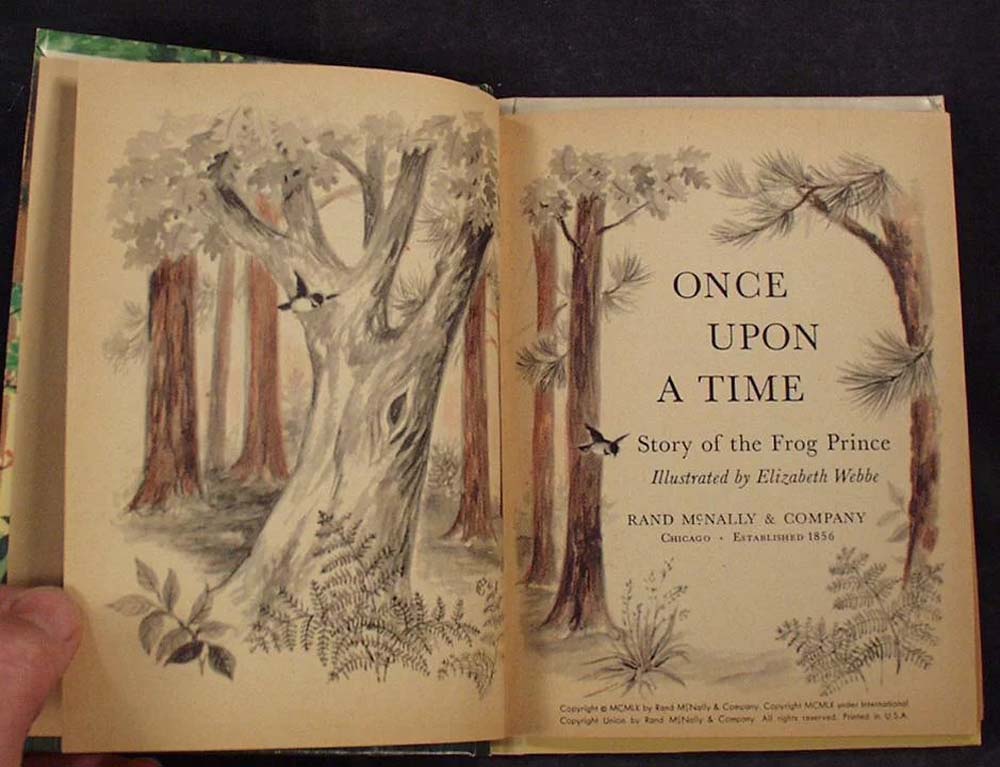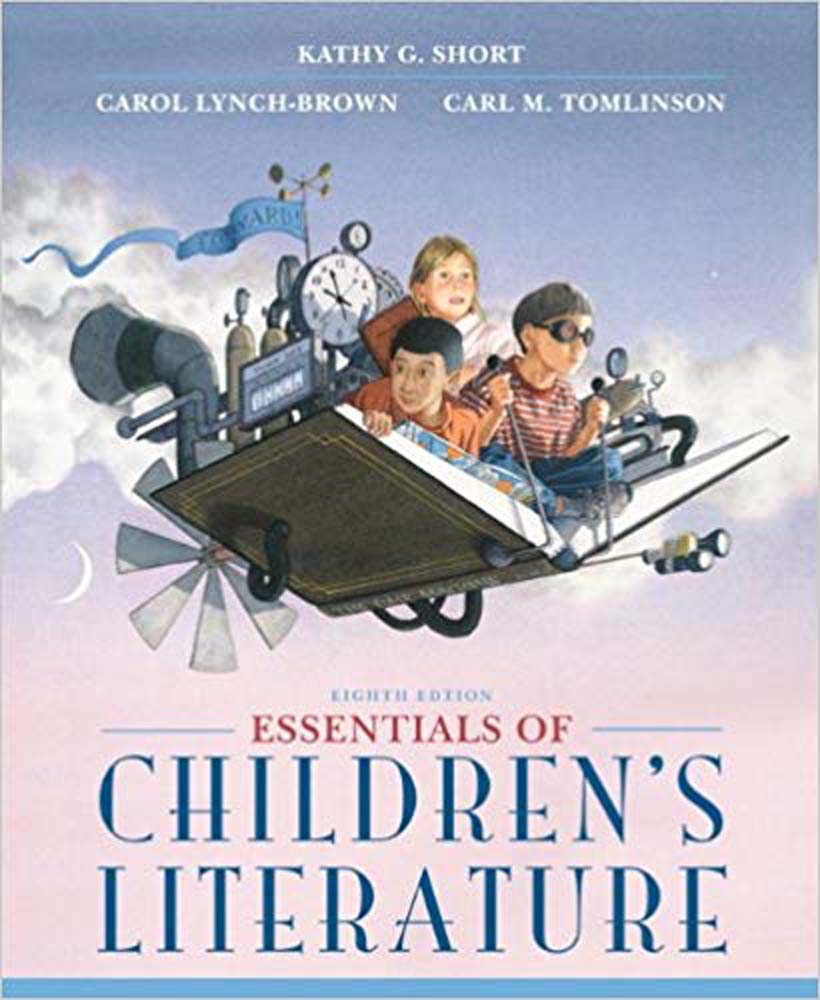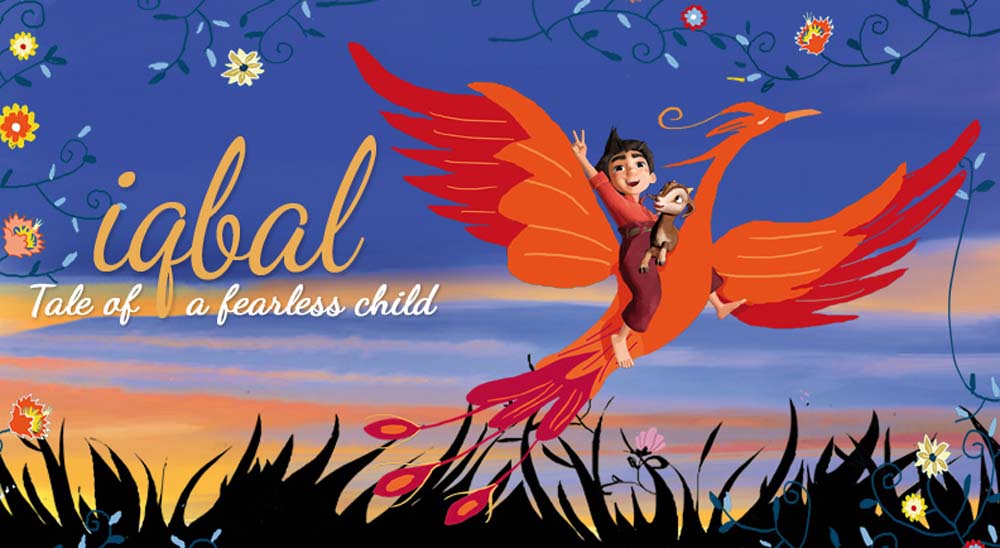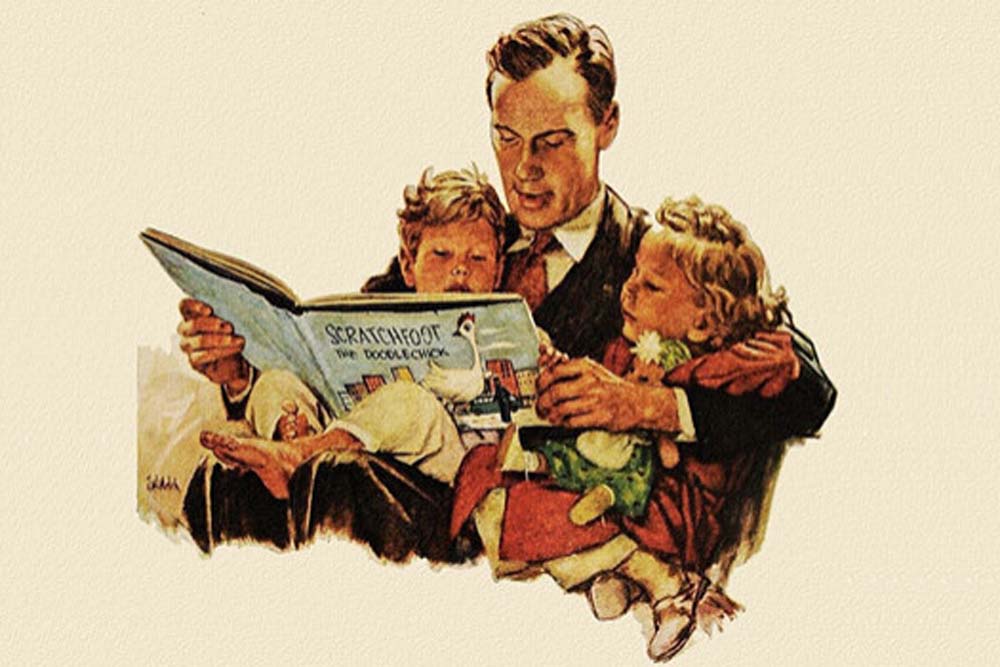Nivedita Yohana
Wijsheidsweb, 2019-02
part 1 — part 2 — part 3
Be ever watchful for the opportunity to shelter little children with the umbrella of your charity; be generous to their schools, their hospitals, and their places of worship. For, as they must bear the burdens of our mistakes, so are they in their innocence the repositories of our hopes for the upward progress of humanity.
Conrad Hilton
As parents, facilitators and responsible adults, the responsibility lies on us to shape the younger generation in the best version of ourselves. Stories play a vital role in the growth and development of children.

The reality of young children is different than the adults hence the perception varies too. The books they read and the characters they get to know can become like friends. It’s also good for children to understand that books are a useful source of information and that proficient reading skills are important for success in their future lives. Reading also helps children with their confidence levels, coping with feelings and language and learning. It expands the horizon of their thinking, comprehension and introduces them to varied emotions. When they are exposed to myriad of emotions, it helps get acquainted with the emotions and assimilate their thoughts better.
Stories — whether told through picture books, dance, images, math equations, songs or oral retellings — are one of the most fundamental ways in which we communicate.
Nearly 80 years ago, Louise Rosenblatt, a widely known scholar of literature, in Literature as Exploration, expressed that we understand ourselves through the lives of characters in stories. She argued that stories help readers understand how authors and their characters think and why they act in the way they do.
Similarly, research conducted by Kathy Short in Literature as a Way of Knowing, a scholar of children’s literature, also shows that children learn to develop through stories a critical perspective about how to engage in social action. It builds divergent thinking when it comes to problem solving when faced with problems or challenges later in life.
Why is narration important?
1 Develops a child’s internal dialogue
Often children rebel with their actions and not their words because they don’t know how to express in words what they are feeling. Narration helps a child practice recognizing a feeling and/or experience and the emotions attached to them. Eventually, the child will learn how to silently (internally) assess and articulate his experiences and feelings, before acting upon them (just as adults are expected to do), thereby avoiding tantrums. Tantrums are the consequences of the child being overcome by unknown, scary feelings, leading to a desperate final attempt to communicate their powerless rage and confusion. Narration models a productive use of words because it helps a young child disencumber their internal processes and helps them to asses, organize and retrieve the right words for effective communication.
A key work by novelist John Berger in Ways of Seeing suggests that very young children begin to recognize patterns and visually read their worlds before they learn to speak, write or read printed language. The stories that they read or see can have a strong influence on how they think and behave.

Children can mix reality and fiction in their interpretation of stories.
Vasquez in Negotiating Critical Literacies with Young Children (Language, Culture, and Teaching Series) explains that Hannah had experienced bullying by the boys in the class and did not like seeing that Rudolph was called names and bullied by other reindeer when she read Rudolph the Red-Nosed Reindeer.
Vasquez suggests that Hannah’s picture conveyed her desire not to have the boys tease Rudolph, and more importantly, her.
2 Enhance language and intelligence
Research demonstrates that a baby’s IQ is strongly correlated with the amount of words spoken in the home. The more opportunities to listen to words and attempt to form and use words to communicate, the more intelligent the child will become. Think of each mundane conversation you have with a child as an opportunity to teach vocabulary, logic, grammar, etc. through your communication. The more you talk about what is happening (or narrate), the more your child will learn and develop.
3 Develops emotional intelligence (EQ)
Young children are self-involved by nature, as their needs take priority over anyone or anything else. This is probably an evolutionary necessity in order to survive till they are able to function independently. However this transition from self-involvement to participation with the world around them has to be seamless. Adults are tasked with teaching a child to see themselves as part of a whole rather than The Whole. Doing so requires the development of empathy and other important skills. Recognizing body language, facial response, tone of voice, etc. requires practice. Reading stories offers direct labeling of these otherwise confusing basic human displays of emotion, building EQ and a child’s ability to effectively respond and communicate with others.
4 Validates feelings, behaviours and experiences
Children are a bit self-conscious about their size. They are aware that the adult world is more important than their little toddler world and they long to be validated by adults. Narration of stories verbally acknowledges their experiences and concerns so that they feel heard and, more importantly, known. When questions are asked based on the story also puts them in spot light to come up with the best answer and feel of worthiness roused by the fact that their opinions matter. Being known is a fundamental human desire (hence social media’s immense popularity). Every human has an innate sense they are somebody and we want others to see us for our unique thoughts, attributes and significance. Narration communicates to a child, “I see and hear you and you are important and will not go unnoticed”, whether or not their behavior is positive or negative. It recognizes without judging.
5 Fostering imagination

Stories help to nurture a child’s imagination by introducing innovative ideas into their world — ideas about fantastical worlds, other planets, different points in time and made-up characters. It’ll encourage the children to realize that they can, and should, imagine anything they want. The beauty of stories is that they can be super realistic or incredibly fantastical. They can be reading about children growing up in the same situation as them one minute and about another species, Martians holidaying on Jupiter for example. By nurturing imagination and creativity, they can not only grow up to be independent, self-reliant but also use the same creativity to solve the problems of the adulthood.
6 Coping with Feelings
When children read stories that contain emotions it can help them understand and accept their own feelings and emotions. It helps them understand that there are other children who feel the same way and they are not alone. This encourages the child to understand that feelings are normal and should be expressed. Watching their responses to the feelings of the characters in the stories will give the child some idea of how a child feels about certain situations and emotions. For example, how the child responds to the character in the story feeling sad or scared.
Stories for change
Scholars have also shown how stories can be used to change children’s perspectives about their views on people in various parts of the world. And not just that; stories can also influence how children choose to act in the world.
Children by nature are free from all the prejudices as they are still unaware of the vices, racism, biases and ego-dominated adult world. If you observe them, they can easily socialize with other kids without really concerned about other kid’s background, colour, ethnicity or socio-economic situation. In this state of purity, it is important for parents and facilitators to sow the seeds of empathy, understanding and differentiate between prejudice emanating from the fear of the adult world and the truth that all human being is same immaterial of the differences emanating from the love of universal brotherhood. Having said that, no matter how much we protect our children from all the worldly cruelties, they will be eventually exposed to the harsh realities and when they do come face to face, the stories they have read about justice, injustice, fear, love, sadness and joy, will come to their rescue in aiding them to make a rational decision that would not hurt another human being or themselves.
 For example, when teachers or parents work with children on how images in stories on refugees’ influence, how refugees are perceived, you can elicit responses from children which are generally without any conditioning or any preconceived notions about foreign looking people.
For example, when teachers or parents work with children on how images in stories on refugees’ influence, how refugees are perceived, you can elicit responses from children which are generally without any conditioning or any preconceived notions about foreign looking people.
Kathy Short in Essentials of children’s literature studied children’s engagement with literature around human rights. In their work in a diverse K-5 school with 200 children, they found stories moved even such young children to consider how they could bring change in their own local community and school.
These children were influenced by stories of child activists such as Iqbal, a real-life story of Iqbal Masih, a child activist who campaigned for laws against child labor. (He was murdered at age 12 for his activism.) Children read these stories along with learning about human rights violations and lack of food for many around the world. In this school, children were motivated to create a community garden to support a local food bank.
Building intercultural perspectives
 Indeed, the diversity of the world is woven into our everyday lives through various forms of media. When children read stories about other children from around the world, such as “Iqbal,” or “Gita” they learn new perspectives that both extend beyond and connect with their local contexts.
Indeed, the diversity of the world is woven into our everyday lives through various forms of media. When children read stories about other children from around the world, such as “Iqbal,” or “Gita” they learn new perspectives that both extend beyond and connect with their local contexts.
How stories shape our world
Just as computer simulations help us get to grips with complex problems like flying a plane or forecasting the weather, so novels, stories and dramas help us understand the complexities of social life
The stories we hear as children shape our view of the world. Most small children live their lives in quite a limited environment. Reading stories to children can show them far-flung places, extraordinary people and eye-opening situations to expand, channel their moral compass and enrich their world.
It can also be a great way of helping them deal with real life situations that they need help to deal with. Researchers have found that the brain activity that occurs when we read fiction is very similar to experiencing that situation in real life, so reading about a situation helps children work out how to solve it in reality as they are already familiar with varied emotions and feeling associated with it.
Helps build critical perspective
Simply asking them if they can remember what happened in the story or checking if they know what some of the more complicated words mean can really extend their understanding and vocabulary. More complex ‘inference’ questions like, ‘why do you think this character did that?’ helps children to think about and understand other people’s motivations and intentions. “Do you agree with the outcome?” helps children think about the different possibilities of the outcome based on the decision.
Reading and talking about stories with your child can be enjoyable and a lovely bonding activity. Stories also introduce children to a wide variety of words; many more than they will hear in their day to day life and researchers have found that children who are read to more often have a wider vocabulary. Therefore, reading books with your child is an excellent way to develop and nurture their language skills. It also helps them build memory, sustaining concentration and arouse curiosity and inquisitiveness to learn more.
Asking questions about what their favourite bits were and why helps them think about the story and asking them to suggest different story endings helps them to think creatively. On the other hand, discussing the meaning of new and unfamiliar words will enhance your child’s vocabulary.
Researchers studying children’s ability to understand what they have read often distinguish between different types of comprehension questions: literal, inference and evaluative questions. Asking these different types of questions while you read with your child can be a great way to encourage their language skills and story comprehension.
Literal questions

These are simple questions where children are asked a fact from within the story (i.e., the information is literally within the text).
For example: “What was the pirate’s name?” “Can you remember who was on the boat?” “What happened after they got off the boat?” These ‘recall’ type questions are great for younger readers, but you can also ask more complex literal questions. For example, asking your child to summarise the main idea/events in the story requires them to rephrase the story in their own words. Or asking them to recall comparisons between characters/events/places in the story (e.g., talking about differences between the greedy and generous pirate) allows opportunities for further discussion. Literal questions are a good way of assessing your children’s memory and understanding of the story, but for slightly older readers, also introduce inference and evaluative type questions.
Inference questions
Inference questions need children to look beyond the text and give information that was not specifically provided, but which was implied (i.e., children need to ‘read between the lines’). For example, “What do you think happened next?” “Why do you think he did that?” “How do you think the pirate felt when he was left behind?” These questions typically require a greater level of cognitive and language skill than literal questions (both to know the answer and explain the answer). However, it is a skill that even young children are able to do, if the inference question is appropriate for their age and level of language/cognitive ability.
Evaluative Questions

Finally, evaluative questions require children to read behind, in between and beyond the lines; that is, evaluate information within the story based on their own personal knowledge and experience. In these types of questions, children should be encouraged to give (and support) their opinion about an aspect of the story (i.e., character, action, event). For example, “Do you think he should have done that?” “Do you think the Pirates were very different from each other?”
As a parent or grown-up reading with a child, you are best placed to assess their ability to answer these types of questions. Often this ability is not related to their age, but rather to their language skill and past experience of reading, sharing and discussing books. Take time to think about the questions and discussions that you have with your child as you read with them, but most importantly, enjoy sharing these stories together.
Since children are the future generation and harbinger of the future, it is our moral responsibility to shape the children into loving individuals — where love is ruled than fear. The terrorists, criminals and all the people who are set out to destroy the world either through harming the environment through greed, or harming other individuals motivated by fear, are all broken children deprived of matured guidance and love. In order to make the world a better place — we need to catch them young and shape them into beautiful and loving souls. To train them by giving ample opportunities to choose responses which are, perceptive, positive and productive by broadening the horizon of their thinking.
- Hilton, C.N. (2004). Be My Guest. Simon & Schuster.
- Rosenblatt, L.M., & Booth, W.C. (2005). Literature as exploration. New York: The Modern Language Association of America.
- Short, K.G. (1997). Literature as a way of knowing. York, Me.: Stenhouse.
- Short, K.G., Lynch-Brown, C., & Tomlinson, C.M. (2014). Essentials of childrens literature. New York: Pearson.
Notes
[1] Source: umbrella-in-kids-hand
[2] Source: Rudolph the Red-Nosed Reindeer
[3] Source: Once upon a time
[4] Source: Father-reads-to-children











